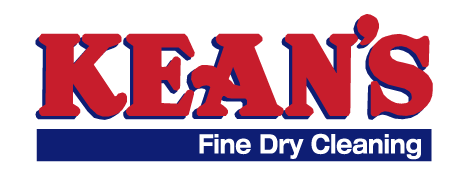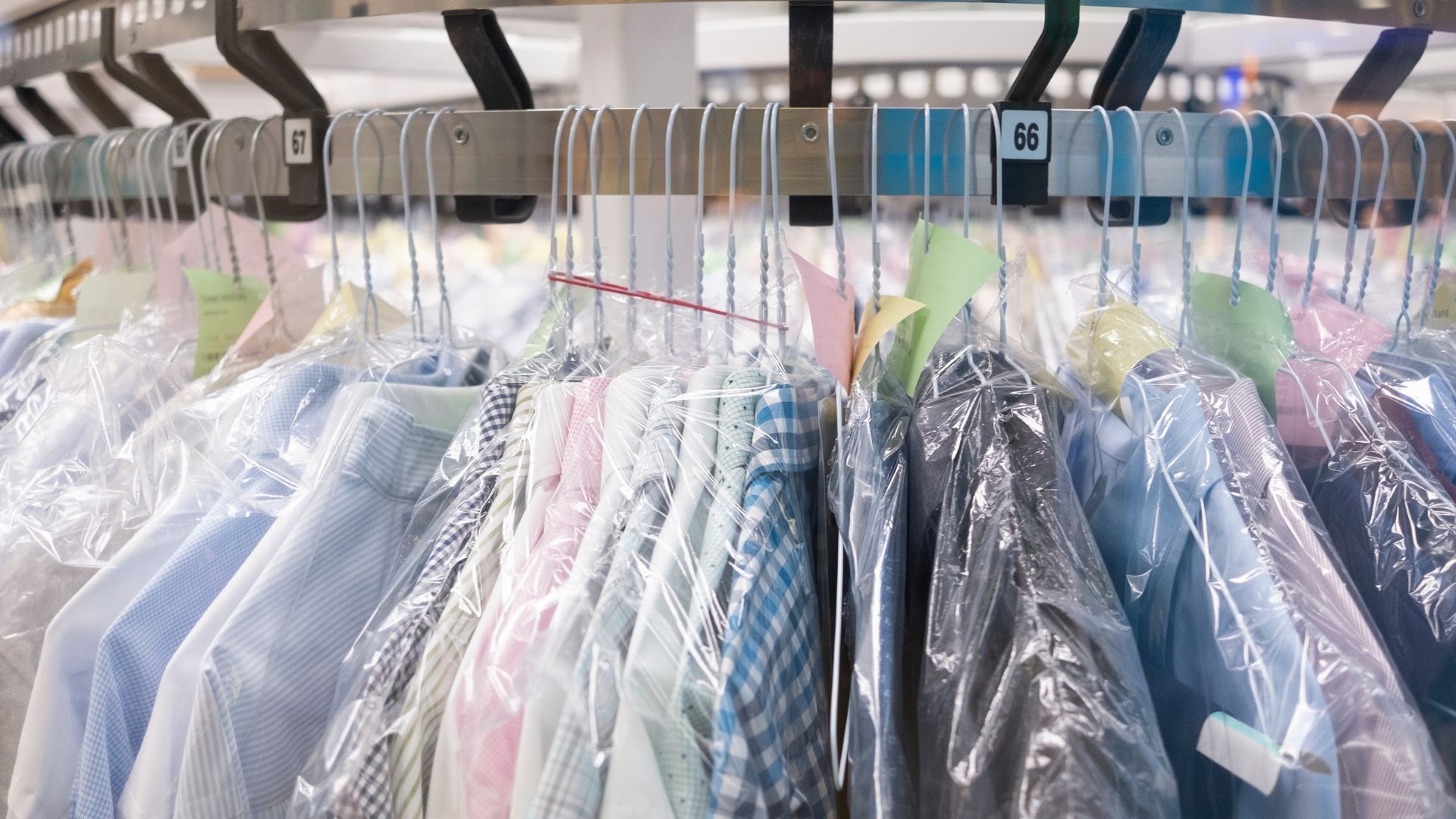Some clothing labels are straightforward – machine wash cold, tumble dry low. And then there’s Dry Clean Only.
There’s a lot of confusion around “Dry Clean Only.” Is it a strict rule? A suggestion? A trap? Can you really ruin your clothes if you just… wash them gently at home?
The truth is, “Dry Clean Only” exists for a reason. It’s about protecting the structure, color, and life of certain garments that won’t survive the spin cycle. In this article, we’ll unpack what dry cleaning actually involves, why some items require it, when you can safely bend the rules, and when it’s smarter to leave it to the pros at Kean’s.
What Is Dry Cleaning, Anyway?
Despite the name, dry cleaning isn’t actually dry – it just skips the water. Instead of using traditional water and detergent, dry cleaning relies on liquid solvents to gently lift stains, oils, and dirt from fabric without soaking or agitating the fibers.
For decades, most cleaners used a chemical called perchloroethylene (PERC). But Kean’s began phasing that out in the late ’90s and fully transitioned to a hydrocarbon-based system by the early 2000s. Why? Because hydrocarbon solvents are gentler on fabrics, safer for employees, and more environmentally responsible.
This water-free approach is ideal for materials like wool, silk, and rayon, which can shrink, stretch, or lose their shape in a washing machine. It’s also essential for structured garments like blazers, dresses with lining, and tailored pieces that rely on precise shaping.
And dry cleaning isn’t just about cleaning. It includes professional stain treatment, pressing, and finishing so your clothes come back looking crisp, fresh, and perfectly polished.
What “Dry Clean Only” Really Means
When a tag says “Dry Clean Only,” it’s not just a suggestion – it’s a warning from the manufacturer that the garment won’t hold up to water-based cleaning. That might be because of the fabric itself, the way the garment is constructed, or both.
Here are a few reasons a piece of clothing might carry that label:
- Delicate fabrics like wool, silk, rayon, or cashmere can shrink, stretch, or lose their finish in a washing machine.
- Dyes may bleed or fade, especially on richly colored or patterned garments.
- Structured pieces like blazers, pleated skirts, or anything with lining, interfacing, or shoulder pads can lose their shape if agitated or soaked.
Dry cleaning keeps these items looking sharp and preserves their shape, texture, and color over time. In short – that little tag is there to help you avoid a laundry disaster.
What Happens If You Wash It Anyway?
We’ve all been tempted – the tag says “Dry Clean Only,” but the washing machine is right there. And sure, you might get away with it once or twice. But over time, ignoring that tag can do real damage.
Here’s what can happen when you wash a dry clean only item:
- Shrinking – Wool and silk can tighten up dramatically, sometimes by a full size or more.
- Color bleeding or fading – Delicate dyes can run in water, especially hot water or with regular detergent.
- Fabric distortion – Items can lose their drape, softness, or finish.
- Structural damage – Lined garments, pleats, or tailored shapes can get twisted or fall flat.
- Residue and buildup – Some fabrics don’t rinse clean with water and detergent, leading to stiffness or odor.
You might not see the damage immediately – but the more you wash, the more the garment changes. And unfortunately, once that damage is done, there’s no easy way to reverse it.
When It’s Okay to Break the Rule (and When It’s Not)
Not every “Dry Clean” label means the same thing. Some say “Dry Clean Only,” while others just say “Dry Clean” – and that subtle difference matters.
If the tag says “Dry Clean Only,” it usually means the fabric or construction truly can’t tolerate water. In that case, it’s best not to take chances. But if it just says “Dry Clean,” it may be more about caution than necessity – and some garments can be gently hand-washed at home.
When it’s probably not safe to wash at home:
- The fabric is silk, wool, rayon, or cashmere
- The garment is lined, tailored, or pleated
- The dyes are rich, saturated, or multi-colored
- You love it and don’t want to risk it
When you might get away with a hand wash:
- The fabric is polyester, cotton, or a synthetic blend
- It’s unlined, unstructured, and colorfast
- You test a hidden spot first and it holds up
Even then, there’s always a risk. If you’re unsure, it’s safer (and often cheaper in the long run) to bring it to a professional. Kean’s is happy to take a look and help you decide the best approach.
Why Trusting a Dry Cleaner Can Actually Save You Money
Dry cleaning sometimes gets a bad rap for being an “extra” expense, but skipping it can cost you more in the long run. When you wash a dry clean only item at home, you’re gambling with its shape, color, and longevity. And if it gets ruined, replacing it often costs far more than one professional cleaning would have.
At Kean’s, we go beyond basic cleaning. Our team is trained to handle delicate fabrics, complex constructions, and tricky stains – all while preserving the look and feel of your garment. We also press and finish everything properly, so your clothes come back looking crisp and polished – not just clean.
Think of dry cleaning as care, not just cleaning. It protects your investment and helps your favorite pieces last season after season.





